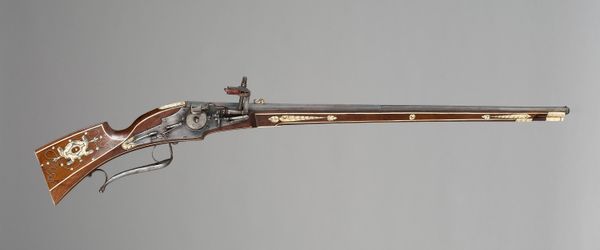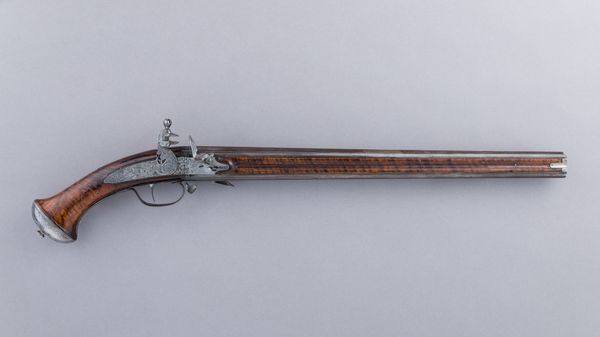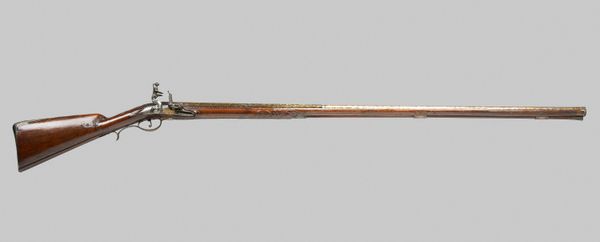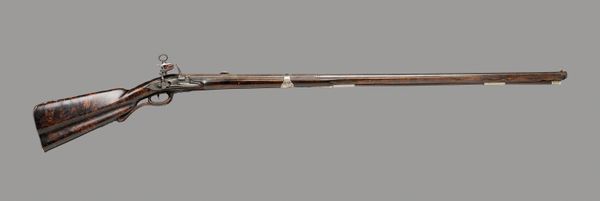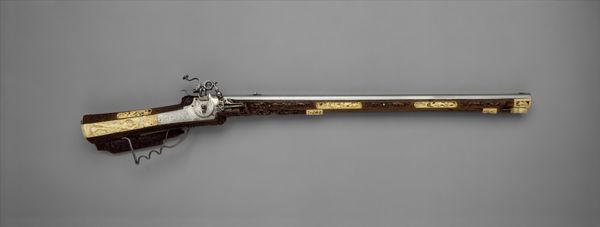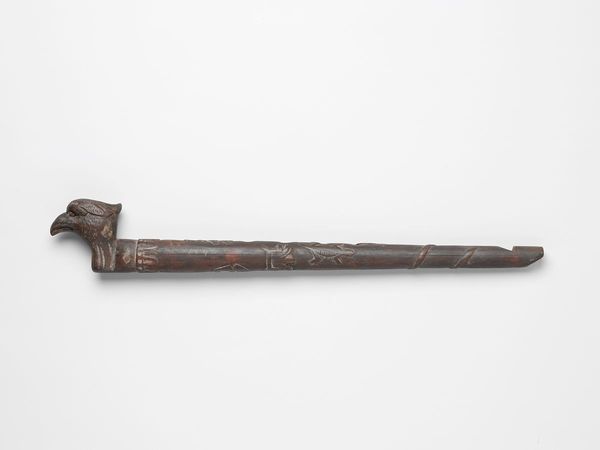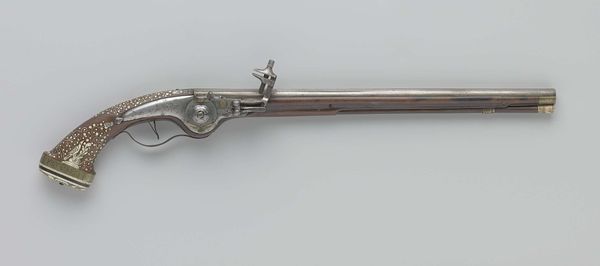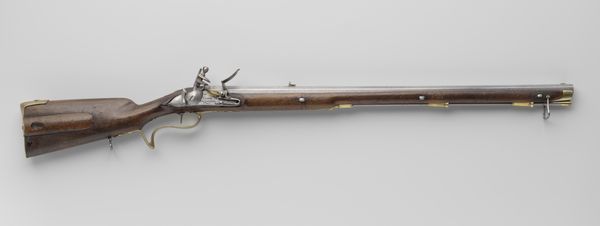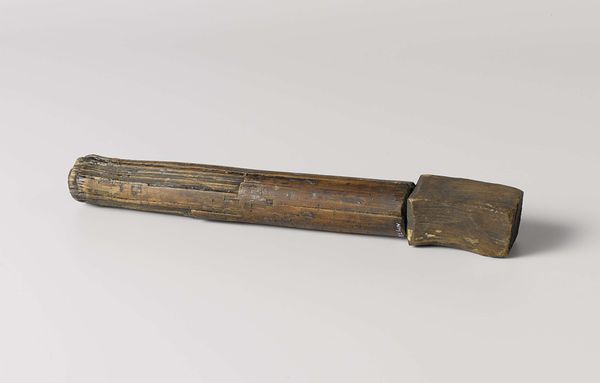
carving, metal, wood
#
carving
#
metal
#
wood
#
history-painting
Dimensions: L. 58 in. (147.3 cm)
Copyright: Public Domain
Editor: Here we have a flintlock gun, probably crafted between 1725 and 1775, and residing at The Met. Made of carved wood and metal, it’s beautiful but also, unsettling, you know? What speaks to you about it? Curator: It speaks of power, Editor. But what kind of power? Guns are often presented simply as tools of force, but consider the layered symbolism. The intricate carving, for instance. What does that suggest to you? Editor: Ornamentation, status maybe? Instead of a purely functional object. Curator: Exactly. The decoration elevates it. Think about the psychological weight – the cold, hard metal paired with organic, carefully worked wood. It’s a deliberate juxtaposition. What does it communicate about the owner, about the period? The cultural memory it embodies? Editor: I hadn’t considered the contrast so deeply. I suppose it's sending a message of wealth, artistry, but also of dominance. Maybe it suggests control over nature? Curator: Precisely! And control over others. Weapons carry a potent cultural and psychological charge. They echo through history. Can you imagine the conversations this object might have witnessed, the power it represented? What fears or desires fueled its creation? Editor: Definitely gives you a lot to think about beyond just its function as a weapon. Thanks! Curator: My pleasure. It is in objects like these we confront uncomfortable truths and see echoes of the past reverberating into our present.
Comments
No comments
Be the first to comment and join the conversation on the ultimate creative platform.

